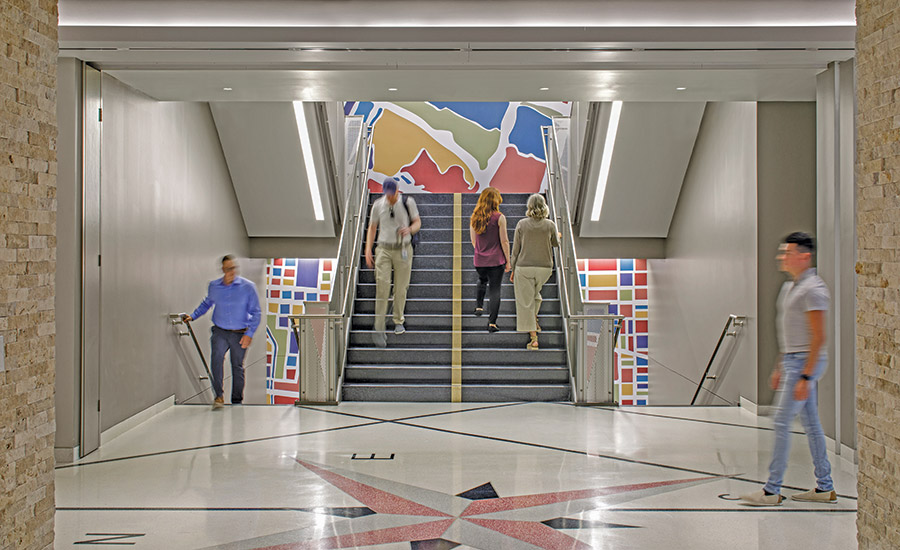2023 ENR Texas & Louisiana Best Projects
Best Governmentt/Public Building: Texas DOT Stassney Campus

Photo courtesy Marmon Mok LP
Texas Dept. of Transportation Stassney Campus
Austin
BEST PROJECT
Submitted by: Marmon Mok LP
Owner: Texas Dept. of Transportation
Lead Design Firm: Marmon Mok LP
General Contractor: Vaughn Construction
Civil Engineer: Jones & Carter (Now Quiddity)
Structural Engineer: Datum Engineers
MEP Engineer: Shah Smith & Associates
Landscape Architect: Coleman & Associates
Geotechnical Engineer: Raba Kistner
Subcontractors: COMBS Consulting Group; Cosper & Associates; Fire Protection Consulting Group; HLB; Lerch Bates; MOCA Systems; Research Facilities Design (RFD); Wiss, Janey, Eistner Associates (WJE)
With leases on office space set to expire, the Texas Dept. of Transportation aimed to complete its new campus and relocate employees on an accelerated schedule. This led the agency to use a CMAR delivery for the first time.
The team split the project across seven work packages in order that new ones could be released while construction progressed on previously bid packages. This approach helped deliver the project on time in May 2022 while also saving taxpayers nearly $23 million.
The campus consolidates 36 TxDOT divisions into a single location that includes four buildings—an office, laboratory, warehouse and parking garage—totaling more than 1.19 million sq ft across 49 acres. At the height of construction, approximately 700 craft employees and 100 support staff were working on site on any given day.
Early in preconstruction, design had to account for an extreme natural grade change, as the site sloped downward toward a natural creek, dividing the site in half. Before work could begin on any building foundations, the contractor had to install several retaining walls to modify the slope to accommodate new buildings and infrastructure. Segmented block retaining walls helped protect the waterway and saved almost $1 million. These walls went up around each building to drain the storm systems into retention ponds, which would then drain back to the creek slowly to prevent erosion.

Photo courtesy Marmon Mok LP
Concurrent work meant concrete placements would often run at three to four buildings on the same day. To ensure these placements progressed as scheduled without delays, crews strategically placed four overlapping tower cranes and sequenced their operations to provide uninterrupted service to trade contractors working on separate bid packages.
On the east elevation of the office building is a 40-ft cantilevered section at Level 3, which is supported by two four-stemmed precast concrete feature columns. The columns mimic the appearance of the bridges and roadway support structures found throughout the state. These columns support the full load of the cantilevered structure above.
The campus design exceeds state energy code requirements with a highly efficient chilled water central plant supporting a chilled beam mechanical system.



